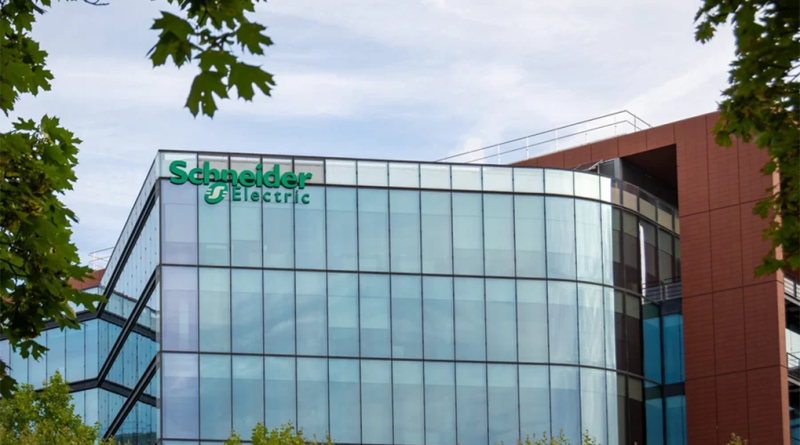Schneider Doubles Down on US Amid AI Manufacturing Boom
Subscribe to our free newsletter today to keep up-to-date with the latest manufacturing news.
Schneider Electric has announced a sweeping $700 million investment across its US manufacturing footprint, signaling a deliberate shift toward reinforcing domestic supply chains and meeting the surging infrastructure needs driven by artificial intelligence. Set to unfold through 2027, the initiative spans facility expansions and upgrades in six states: Tennessee, Texas, North Carolina, Missouri, Ohio, and Massachusetts.
The scale and direction of this investment reflect a calculated move to support the escalating demand for data center hardware, particularly thermal and power systems critical to AI workloads. As part of the initiative, Schneider Electric will manufacture more equipment locally, including switchgear, transformers, generators, and chillers.
Approximately 1,000 new roles are expected to be created across engineering, technical analysis, advanced manufacturing, and development. For Schneider, the focus is not simply on production volume but on future-proofing its value chain. By reorienting its US operations toward high-demand sectors like AI, the company is positioning itself as a foundational supplier to an increasingly data-intensive economy.
AI demand pressures data center infrastructure, and delays mount
Modern data centers, particularly those handling AI workloads, require unprecedented volumes of electrical energy and increasingly sophisticated thermal management systems. Amid booming demand, the supply chain is struggling to keep up.
Lead times for critical infrastructure components such as transformers, chillers, and switchgear now average 28 weeks, with some items taking significantly longer depending on customization. Data center operators are adjusting to power densities that have shifted from kilowatts to megawatts per rack in just a few years. Traditional systems, designed for linear growth, are no match for the exponential surge in AI compute.
Schneider’s investment directly addresses this bottleneck by increasing domestic production. By manufacturing equipment closer to demand centers, the company aims to reduce transit times, navigate regulatory complexity more efficiently, and deliver faster turnaround for customers. It is also a hedge against future supply chain disruptions caused by geopolitical shifts or logistics breakdowns.
The National Electrical Manufacturers Association has emphasized the urgency of this response. Debra Phillips, NEMA’s president and CEO, recently stated that the US electrical system must prepare for a historic surge in energy consumption, largely driven by AI. She described the industry as entering an inflection point where capacity, speed, and energy reliability must be addressed simultaneously.
The infrastructure gap is clear. Without scalable and efficient power and cooling systems, the AI revolution could be slowed, not by a lack of innovation but by the limits of hardware. Schneider’s strategy is designed to prevent that outcome by building the necessary foundation ahead of demand.
Manufacturing expansion across six states fuels industrial innovation
Schneider Electric’s $700 million commitment is taking shape across a network of US sites, each with a specific role in supporting AI infrastructure. The expansion spans six states, with site-specific strategies tied to product specialization and access to skilled labor.
In El Paso, Texas, the company plans to expand its existing manufacturing operations to increase production of switchgear and energy distribution systems. Lexington, Kentucky, and Columbia, Missouri, will see upgrades that support the development of next-generation transformers. Andover, Massachusetts, home to Schneider’s flagship R&D site, will focus on engineering high-efficiency thermal systems tailored to data environments with intensive AI workloads.
The selected states offer access to logistics hubs, regional data center clusters, and engineering talent pools. This geographic positioning allows Schneider to move quickly, respond to customer needs, and mitigate the effects of global shipping disruptions. It also supports state and federal goals to reshore advanced manufacturing.
The initiative is expected to generate around 1,000 new jobs, many in roles aligned with long-term industrial transformation. Advanced manufacturing, power system design, and digital engineering roles are among the areas expected to see growth. Local governments and economic development authorities have welcomed the expansion as a signal of renewed investment in US industry.
All facilities involved in the expansion will feature smart manufacturing technology. This includes automation, real-time analytics, and digitally connected production systems. These tools are central to Schneider’s plan to increase both output and operational flexibility while maintaining quality across product lines.
Digital twin technology brings predictive intelligence to data centers
As Schneider builds capacity on the ground, it is also investing in tools to improve infrastructure performance before deployment begins. A key element of that approach is digital twin technology, developed in collaboration with NVIDIA. Unveiled at NVIDIA’s recent GTC event, this system simulates how a data center will operate under AI workloads before physical construction starts.
Digital twins are virtual replicas of physical systems. In this case, they model everything from power distribution to heat generation to cooling flow. By simulating performance under real-world conditions, operators can test multiple configurations, identify inefficiencies, and forecast energy consumption with greater accuracy.
Schneider’s partnership with NVIDIA amplifies this effect. The integration of Schneider’s domain knowledge in electrical systems with NVIDIA’s high-performance computing platforms allows for the development of AI-ready reference architectures. These standard models can then be customized to suit specific applications, speeding up deployment and improving cost control.
Schneider Electric’s investment reflects a broader movement across the tech and infrastructure sectors. The alignment with NEMA and other industry bodies reinforces the importance of this moment for electrical manufacturers. The combination of scale, smart design, and predictive tools creates a framework for how infrastructure providers can prepare for AI at scale.
Sources:
